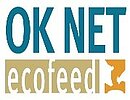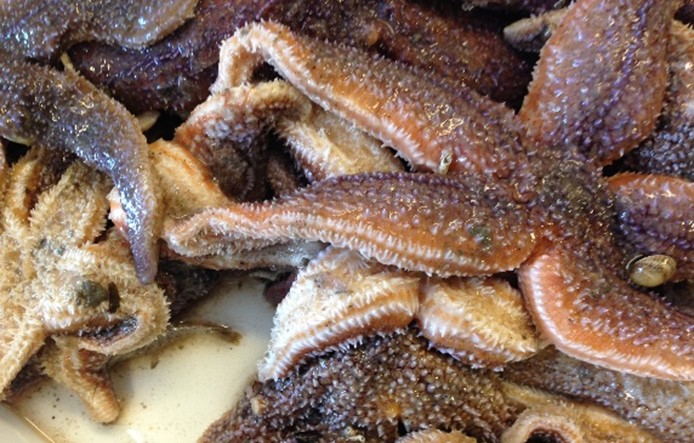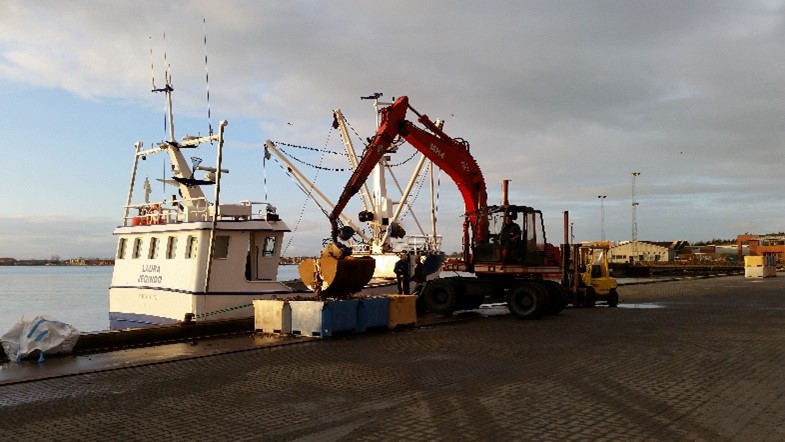Starfish as feedstuff
Problem
An increase in demand for organic feedstuffs is expected to limit protein availability. Therefore, new and more sustainable protein-rich ingredients are needed.
Solution
Starfish are caught to reduce predation on farmed mussels. Starfish meal contains 38-70% protein and can be used to partially replace other protein-rich ingredients in monogastric animal feed.
Benefits
Feeding starfish meal gives comparable growth to feeding fishmeal in piglets. For layers, egg production and quality are maintained at normal levels when feeding up to 8% starfish meal.
Applicability box
Geographical coverage
Coastal countries
Application time
February-May
Required time
Time of feeding
Period of impact
Immediate
Equipment
No extra equipment needed for feeding
Best in
Piglets, layers
Practical Recommendations
- Starfish should be harvested, at the earliest, three months before spawning to have highest protein and lowest ash content.
- High calcium levels limit the inclusion level of starfish meal in piglets’ diets to around 5%.
- Starfish meal is not organically certified but can still be used because it is not of agricultural origin.
- Starfish meal is already commercially available in Denmark.
- Diets can be optimized regarding amino acids and with lower crude protein.
Further information
Reading
- Afrose, S., M. Hammershøj, J. V. Nørgaard, R. M. Engberg, and S. Steenfeldt. 2016. Influence of blue mussel (Mytilus edulis) and starfish (Asterias rubens) meals on production performance, egg quality and apparent total tract digestibility of nutrients of laying hens. Animal Feed Science and Technology 213:108-117. (Article) doi: 10.1016/j.anifeedsci.2016.01.008
- Nørgaard, J. V., J. K. Petersen, D. B. Tørring, H. Jørgensen, and H. Lærke. 2015. Chemical composition and standardized ileal digestibility of protein and amino acids from blue mussel, starfish, and fish silage in pigs. Animal Feed Science and Technology 205:90-97.
- Sørensen, P., and J. V. Nørgaard. 2016. Starfish (Asterias rubens) as feed ingredient for piglets. Animal Feed Science and Technology 211:181-188.
- van der Heide, M. E., L. F. Møller, J. K. Petersen, and J. V. Nørgaard. 2018. Annual variation in the composition of major nutrients of the common starfish (Asterias Rubens). Animal feed science and technology 238:91-97.
- van der Heide, M. E., D. Carlson, and J. V. Nørgaard. 2018a. Growth performance of weaned pigs fed different levels of starfish meal. Animal feed science and technology 238:84-90.
- Ter Beek, V. 2016. Can piglets be fed on starfish meal? Pig progress, 32 (3), pp 28.
- Check the Organic Farm Knowledge platform for more practical recommendations
About this practice abstract and OK-Net EcoFeed
Publishers:Aarhus University, AU Foulum,
DK8830Tjele,
Phone +45 8715 0000,
,
https://agro.au.dkResearch Institute of Organic Agriculture (FiBL),
CH5070Frick,
Phone +41 62 865 72 72,
info.suisse@fibl.org,
www.fibl.orgIFOAM Organics Europe,
BE1000Brussels,
Phone +32 2 280 12 23,
www.organicseurope.bio,
www.organicseurope.bio
Review: Lindsay Whistance, Organic Research Centre, UK
Contact: marleen.vanderheide@anis.au.dk
Permalink: https://organic-farmknowledge.org/tool/37559
https://orgprints.org/view/projects/OKNetEcoFeed.html
This practice abstract was elaborated in the Organic Knowledge Network on Monogastric Animal Feed project. The project is running from January 2018 to December 2020. The overall aim of OKNet EcoFeed is to help farmers, breeders and the organic feed processing industry in achieving the goal of 100% use of organic and regional feed for monogastrics.
Project website: https://ok-net-ecofeed.eu/
IFOAM Organics Europe (project coordinator), BE; Aarhus University (ICROFS), DK; Organic Research Centre (ORC), UK; Institut Technique de l'Agriculture Biologique (ITAB), FR; Research Institute of Organic Agriculture (FiBL), CH; Bioland, DE; Associazione Italiana perl'Agricoltura Biologica (AIAB), IT; Donau Soja DS, AT; Swedish University of Agricultural Sciences, SE; ECOVALIA, ES; Soil Association, UK.



This project has received funding from the European Union’s Horizon 2020 research and innovation programme under grant agreement No 773911. This communication only reflects the author’s view. The Research Executive Agency is not responsible for any use that may be made of the information provided. The authors and editors do not assume responsibility or liability for any possible factual inaccuracies or damage resulting from the application of the recommendations in this practice abstract

